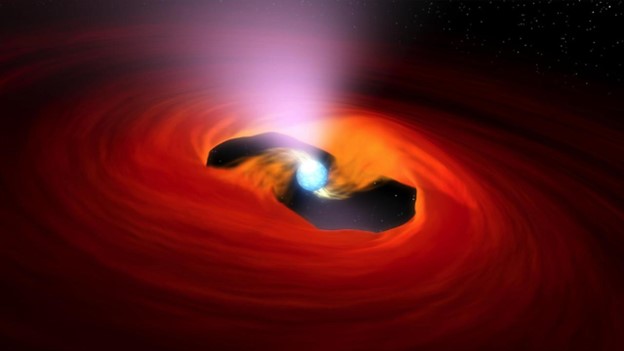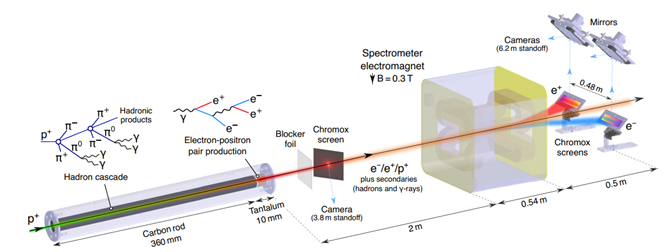In a collaboration between researchers from various institutions, Bob Bingham (CLF), Raoul Trines (CLF), Jack Halliday (CLF) and Tristan Davenne (Technology) joined their peers from several international institutions in creating relativistic electron-position pair plasmas previously only found in deep space within our Earth-bound laboratories. The team's findings come amid ongoing efforts to advance plasma science by using ultrahigh-intensity lasers, an avenue of research that will continue to be explored using the CLF's upcoming Extreme Photonics Applications Centre and Vulcan 20-20 facilities.
Electron-position pair plasmas are uniquely distinct due to the perfect mass symmetry and charge asymmetry between the electrons and positrons making them up. While single-component positron beams and non-neutral electron-positron beams have been created and studied extensively in the lab, scientists have faced difficulties in producing electron-positron pair plasmas due to the challenge of generating sufficient levels of positrons to match the electron densities. Various methods have been suggested over the years including the use of nuclear reactors, electron accelerators, and photon-magnetic field interactions. Unfortunately, none have succeeded in generating a sufficiently dense pair plasma displaying collective effects stable and representative enough for testing.
The reason why researchers are so keen on recreating electron-positron pair plasmas in the lab is due to their ubiquity within and around extreme astrophysical environments. They are emitted by some of the most energetic objects in deep space including black holes, neutron stars, active galactic nuclei (compact centres of galaxies), and gamma-ray bursts (one of the strongest explosions in the universe). The replication of this plasma in the lab is key to a better understanding of these objects as it allows scientists to directly probe, test, and study its properties. Without doing so, our understanding of this unique type of plasma and its associated astrophysical phenomena remains restricted to theory and modelling.

Image credit: NASA. This is a neutron star, one astrophysical object we can find electron-positron plasmas around.
After decades of effort, scientists from the CLF and their colleagues finally succeeded in producing electron-positron pair plasmas robust enough for testing. Using CERN's Super Proton Synchrotron (SPS), they managed to generate sufficiently high numbers of electrons and positrons by bombarding a specialised target with a proton beam traveling near the speed of light. This resulted in a flood of positrons and electrons dense enough to create electron-positron pair plasmas displaying collective effects suitable for testing.
“This opens up an entirely new frontier in laboratory astrophysics by making it possible to experimentally probe the microphysics of gamma-ray bursts or blazar jets," says lead author Charles Arrowsmith, a physicist from the University of Oxford.

Image credit: Fig. 1: Experimental setup. | Nature Communications https://doi.org/10.1038/s41467-024-49346-2. Diagram showing the laboratory set-up.
This is a breakthrough worthy of celebration and has certainly opened the floodgates for many more exciting research opportunities to come. Looking into the future, scientists on the team have suggested that the use of a thicker target could further increase the efficiency of electron-positron pair conversion. Addressing the accessibility of this technique, they also noted that most facilities will need a stronger laser to replicate this process. The research community can certainly look forwards to further progression within this field with Vulcan 20-20 and EPAC on the horizon.
Coauthor Gianluca Gregori, a professor of physics at the University of Oxford adds, “The achievement highlights the importance of exchange and collaboration between experimental facilities around the world, especially as they break new ground in accessing increasingly extreme physical regimes."
In addition to the CLF, University of Oxford, and CERN, collaborating institutions on this research include the Laboratory for Laser Energetics (University of Rochester), the University of Strathclyde, the Atomic Weapons Establishment, the Lawrence Livermore National Laboratory, the Max Planck Institute for Nuclear Physics, the University of Iceland, and the Instituto Superior Técnico in Portugal. Indeed, the success of this research would not have been possible without contributions from all the institutions involved. This is yet another reminder of the importance of collaboration in science.
Read the full paper here.
